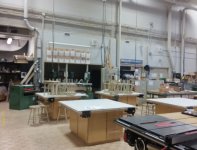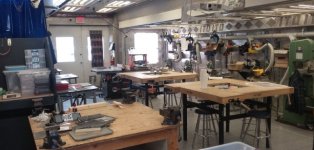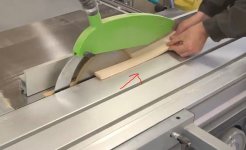https://www.ncbi.nlm.nih.gov/pmc/articles/PMC4154236/
I'm really pleased that all school shops in my province (probably in the country, too) are equipped with the SawStop PCS/ICS, knowing that school kids suffered from such a high incidence rate of injuries due to the use of table saws.
Semi-surprisingly, many injuries happened even with the use of the blade guards (22% to 31% of the time).
And yes (or as many know), experience doesn't necessarily make one safer.
I'm really pleased that all school shops in my province (probably in the country, too) are equipped with the SawStop PCS/ICS, knowing that school kids suffered from such a high incidence rate of injuries due to the use of table saws.
Semi-surprisingly, many injuries happened even with the use of the blade guards (22% to 31% of the time).
And yes (or as many know), experience doesn't necessarily make one safer.



